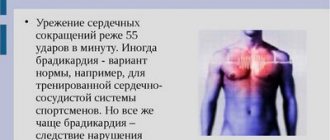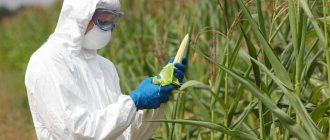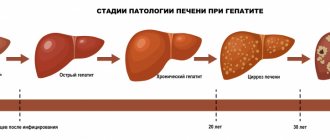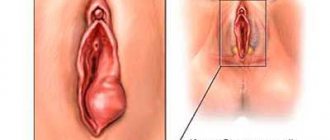Every kitchen employee of a catering establishment should be familiar with the classification of food poisoning and measures to prevent it. By understanding the etiology of various pathologies, it will be possible to reduce the risk of poisoning cases among cafe or restaurant visitors to zero.
This is important not only to avoid the attention of sanitary and epidemiological control authorities and penalties. Food hygiene is the foundation for guaranteeing a safe stay in catering establishments, without which it will not be possible to gain a stable positive reputation (no matter what promotions or marketing delights they try to attract customers).
What are food poisonings?
This concept includes all cases of ingestion of food products containing pathogenic microorganisms or their toxins, as well as any other toxic substances. Depending on the specific source of the disease, all food poisoning is briefly classified into three main types. Below is a diagram reflecting the main ones.
The diagram shows that all pathologies with an established etiology are divided into two main groups:
- microbial origin;
- non-microbial nature.
Also rare in medical practice, food poisoning of the third type occurs - with an unknown etiology. In other words, there is no exact information about the reason for their development.
An example of such a disease is Haffa disease. This is poisoning, accompanied by impaired kidney function and severe muscle pain, which can even limit the ability to move. This pathology occurs in residents of certain bodies of water, and its connection with fish such as pike perch, perch and pike has been proven. But scientists still cannot name the exact reason (specific conditions or substances) that provokes its development.
With the development of science and research methods, such food poisoning with an unknown etiology is becoming less and less common, but they still occur. Therefore, it is so important to strictly adhere to the principles of food hygiene, because still not all diseases have a clear algorithm for providing medical care.
Main signs of food intoxication
When pathogenic microflora multiply in the human body, intoxication of the body occurs. This manifests itself with pronounced symptoms. If against their background there is a significant deterioration in the condition, urgent measures must be taken. The first signs of food poisoning, in most cases, appear within 2-6 hours after dangerous microorganisms, along with low-quality or spoiled food, enter the body.
When intoxicated, severe weakness and increased body temperature are always noted. Sometimes indicators can reach critical values. Additionally, nausea and vomiting occur. Other symptoms depend on the type of toxin and the characteristics of the body. May be observed:
- Heartburn.
- Diarrhea.
- Heavy salivation
- Increased flatulence.
Against the background of weakness and malaise, aversion to food occurs and chills appear. In severe cases, there is a drop in blood pressure, clouding or loss of consciousness.
Documents regulating food safety issues
A regulatory framework has been developed to assist the administration of catering establishments in maintaining food hygiene and ensuring safety. The key documents in it are:
- GOST R 51705.1-2001 (describes the basic principles of food quality management, taking into account the requirements of modern HACCP principles).
- GOST R ISO 22000-2019 (provides the basics of safety management when working with food).
- SP 2.3.6.1079-01 (sanitary rules describing epidemiological requirements for the circulation of products in the catering sector).
In these documents you can find not only information about the requirements, but also justification for them. For example, the condition of using only professional equipment and surfaces is determined by their performance characteristics. In particular, products made of stainless food steel allow the use of concentrated detergents that meet the requirements of public catering to maintain hygiene.
Review of features of food poisoning of microbial origin
According to the general classification, this includes poisoning caused by microorganisms or their metabolic products. Depending on the exact cause, the following types of food poisoning of microbial origin are distinguished:
- toxic infections (occur when live bacteria enter the body, where they release waste products that are toxic to humans);
- toxicosis (develops when consuming products without living microorganisms, but containing toxic metabolic products);
- mycotoxicosis (pathological condition develops as a result of poisoning with products contaminated with toxins of microscopic fungi).
Below is a table with examples of the most common diseases of all three types.
Let us briefly consider the features of each of the common diseases in order to form an understanding of the routes of penetration of microorganisms and effectively prevent it.
E. coli poisoning
Infection most often occurs from pathogen carriers (animal or human) upon contact with any food. Moreover, the risk of developing food poisoning is greatest in case of contact with finished products (salads, mashed potatoes, etc.). This is explained by the fact that E. coli dies during heat treatment (from +60°C).
Proteus bacillus poisoning
In this case, food contamination most often occurs during improperly organized transportation or cutting of meat and vegetables. That is, if work tables or equipment in a catering kitchen are not handled properly.
The carriers of the pathogen are animals and people. The course of this disease is very similar to the symptoms of E. coli poisoning.
Botulism
This kind of food poisoning develops when eating foods contaminated with botulinum bacillus toxins. Among the six main variations of such a microorganism, the most dangerous is type A.
In a favorable environment, botulism pathogens actively live and reproduce in almost any food (both animal and plant origin). At the same time, the greatest risk of infection is observed in situations with canned fish and meat.
Staphylococcal toxicosis
Poisoning is caused by one of the six existing staphylococcal enterotoxins. Most often they are found in milk and products obtained during its processing (in particular, cottage cheese).
In addition to eating disorders, staphylococcal representatives can cause problems with other organ systems. But serologically, the causative agents of enterotoxicosis are classified as a separate group of microorganisms.
Ergotism
It develops when consuming flour products made from grains infected with the microfungus ergot (aka uterine horn). To prevent it, it is important to conscientiously purify food raw materials using special methods.
Since this process is quite painstaking, a maximum permissible concentration in cereals or flour of this microorganism that is safe for health has been established (up to 0.05%). Interestingly, ergot is widely used in pharmacy to make medicines.
Aflotoxicosis
The pathology is provoked by eating cereals (for example, rice or corn) containing aflatoxin compounds. These include more than two dozen substances. The most dangerous is the representative coded B1.
First aid
If signs of intoxication appear, you must urgently call an ambulance. Before the arrival of specialists, it is necessary to rinse the stomach. To do this, a person must drink a large amount of warm, clean water or a weak chamomile decoction, after which vomiting should be provoked. It is also necessary to do an enema if possible. Be sure to buy and take absorbents after gastric lavage.
Because vomiting and diarrhea can lead to dehydration, you should drink plenty of fluids regularly once your condition has stabilized. These can be herbal teas without added sugar, compote or infusion of dried fruits, still mineral water. In severe cases, oral rehydration solution is prescribed for recovery.
In order to minimize the risks of food poisoning, it is important to strictly observe the rules of personal hygiene. It is imperative to wash your hands before eating, treat foods that are eaten raw with boiling water, and observe the shelf life of foods. At the slightest suspicion that the products have spoiled, they should be discarded.
Characteristics of food poisoning of non-microbial etiology
Such pathologies develop due to three main reasons:
- Getting poisons and chemical impurities into food products (for example, when growing them in regions with high levels of radiation).
- Consumption of plant or animal foods that are poisonous in nature (in particular, if berries or mushrooms are incorrectly identified).
- Poisoning due to the use in cooking of products of animal or plant origin that acquire toxic properties during certain periods (for example, certain exotic algae can only be used during special periods of growth and development).
Most often, according to statistics, situations of food poisoning occur in dishes that use mushrooms.
The second most common disorder is occupied by disorders that develop as a result of salts of certain heavy metals entering food. For example, zinc or copper. The ingress itself can occur both from containers or technical equipment, and from gastronorm containers.
In this case, food poisoning manifests itself not in an acute, but in a chronic form (which is especially typical for lead salts). This is explained by the ability of compounds to accumulate in the body, exerting a slowly developing destructive effect on the human body.
Separately, mention should be made of salts of nitrous acid (so-called nitrates), which can also provoke serious digestive disorders. Currently, their use in a wide variety of products to improve their presentation is especially popular. Nitrates can also accumulate in plants with excessive use of synthetic nitrogen fertilizers.
4
3.1. Dose (concentration) of a toxic substance 3.2. Types, classification, clinical stages of poisoning 3.3. Ways of poisons entering the body 3.4. Absorption of toxic substances 3.5. Distribution of poisons in the body 3.6. Features of the toxic effect of some toxic substances
3.1. Dose (concentration) of a toxic substance
The degree of danger of poisons for the human body (animals) is determined by specific concepts that characterize the depth of the toxic effect, causing disturbances in the normal physiological state up to the death of the organism. All degrees of toxic effects of chemicals on a living organism are combined into the “toxicometry” section.
Basic parameters of toxicometry
LD50 (LD100) – average lethal (lethal) dose of a toxic substance, causing the death of 50 (100%) experimental animals with a certain method of administration (orally, on the skin, etc., except inhalation) within 2 weeks. follow-up. Expressed in mg/kg of animal body weight.
LC50 (LC100) – concentration (dose) of a toxic substance causing the death of 50 (100%) experimental animals during inhalation exposure. Expressed in mg per 1 m3 of air.
OBUL is an approximate safe level of exposure to a substance. Expressed in mg per 1 m3 of air.
Table 1. Toxic and lethal concentrations of certain foreign compounds in human plasma
| Foreign connection | Concentration, µg/ml | |
| toxic | fatal | |
| Aminazine | 0,8 – 2,0 | 3,0 – 12 |
| Barbital | 20,0 – 100,0 | >100,0 |
| Barbamil | 300,0 | — |
| Diazepam | 2,0 – 10,0 | 50,0 |
| Cocaine | 5,2 | – |
| Coffees | — | 100,0 |
| Morphia | 1,0 | – |
| Arsenic | 1,0 | 15,0 |
| Nitrazepam | 0,2 | — |
| Oxazepam | 2,0 | — |
| Salicylates | 150,0 – 300,0 | 500,0 |
| Strychnine | 2,0 | 9,0 – 12,0 |
| Thioridasia | 10,0 | 20,0 – 80,0 |
| Phenobarbital | 40,0 | 80,0 – 264,0 |
| Chloroform | 70,0 – 250,0 | 390,0 |
| Chloral hydrate | 100,0 | 250,0 |
| Elenium | 5,5 | 20,0 |
| Etaminal sodium | 100,0 | — |
LDmin—minimum toxic dose. This is the smallest amount of poison that can cause a picture of acute poisoning without death with possible long-term consequences of intoxication.
The toxic hazard of a chemical is characterized by the size of the zone of acute toxic action: LD50/LDmin
The higher this value, the safer the substance.
Table 1 shows the plasma concentrations of some toxic compounds.
3.2. Types, classification, clinical stages of poisoning
The complex of pathological changes that occur in the body under the influence of toxic substances is called poisoning or intoxication.
Types of poisoning
Acute poisoning is the immediate entry into the body of a toxic dose of a substance. It is characterized by an acute onset and the manifestation of specific symptoms of poisoning. Acute poisoning can be fatal within a few minutes (hydrocyanic acid and its salts), hours or days.
Chronic poisoning is possible with repeated exposure (over a long period of time) to small doses of toxic substances that accumulate in the body, which do not cause acute poisoning, but are sufficient to damage one or another body function. They are characterized by a slow course and unclear symptoms.
Classification of poisonings
Accidental poisonings that occur when various substances are used by persons who may not be aware of their toxic effects and consequences of ingestion. These poisonings can occur with an overdose of medications and, especially, those containing potent, narcotic and psychotropic substances. Such poisonings include poisoning from alcoholic beverages, as well as household poisoning and poisoning in industrial accidents.
Intentional poisonings occur when toxic substances are used by persons who know in advance the consequences of their use. Such poisonings, as a rule, pursue criminal goals: bringing the victim to death or a helpless state for the purpose of violence or robbery. Intentional poisonings include suicidal poisonings – true and demonstrative (simulated). It should be emphasized that alcoholism often leads to suicidal poisoning. According to statistics, 40% of suicides are caused by alcohol intoxication. The use of certain substances can provoke alcoholic psychosis (for example, barbiturates against the background of chronic alcoholism).
Industrial poisonings, as a rule, are chronic. They occur in enterprises where workers come into contact with toxic substances in the absence of proper labor protection and safety precautions.
In toxicology, there are two clinical stages of poisoning:
1. Toxigenic stage. During this period, the toxic agent is in the body in a dose capable of causing a specific effect.
2. Somatogenic stage. It occurs after the removal or destruction of a toxic agent in the form of “trace” damage to the structure and functions of various organs and systems of the body.
The toxicogenic stage includes 2 phases of distribution of the toxic substance - resorption (until the maximum concentration of poison is reached in the blood) and elimination (until the poison and its metabolites are completely eliminated from the body). At this stage, special measures are taken to detoxify and treat poisoning. The somatogenic stage involves symptomatic treatment of the consequences of poisoning.
3.3. Routes of poisons entering the body
Toxic substances can enter the body through the gastrointestinal tract, respiratory tract, skin, mucous membranes, placenta, as well as through intravenous, intramuscular or subcutaneous administration.
The greatest forensic importance is the intake of poisons through the mouth. This route of penetration of poisons into the body is characteristic of most food and household poisonings.
Toxic compounds from the surrounding air penetrate through the respiratory tract in the form of gases, vapors, and dust. This is possible due to poisoning from household gas, carbon monoxide (II) and various gaseous substances in rooms with poor ventilation.
Lipid-soluble substances penetrate through the skin. Water-soluble poisons can penetrate the skin in small quantities.
Poisoning by parenteral intake of poisons (by injection under the skin, into muscles, into a vein) is rare and is characterized by the fact that the substance, bypassing the digestive canal, immediately enters the blood.
Through the placenta, toxic substances pass from mother to fetus (for example, ethyl alcohol, drugs, chlorine-containing pesticides, salts of heavy metals, etc.).
In addition to these routes, toxic substances can enter the body through the mucous membranes of the eyes, nose, genitals, rectum, peritoneum, pleura, etc.
3.4. Absorption of toxic substances
Any substance, including poison, must pass through one or more cell membranes to exhibit a biological effect. From the course of normal physiology, students know that the cell membrane ensures the penetration into and out of the cell of molecules and ions necessary to perform specific cell functions, selective transport of ions across the membrane to maintain the transmembrane potential and specific cell contacts.
Skipping many questions regarding the function of membranes, we must dwell on the structure of membranes in order to understand the ways of penetration of various poisons into the cell.
The cell membrane is an elastic structure with a thickness of 7-11 nm. It consists of lipids and proteins. Up to 90% of all lipids are phospholipids, which form a double layer of phospholipid molecules. These groups are associated with protein molecules partially embedded in the lipid membrane. The lipid bilayer is a liquid crystalline structure. Due to this, the membranes have some mobility, which facilitates the processes of transport through them.
The membrane diagram postulated in the 1930s by Dawson and Danielli is shown in Figure 1.
The hydrophobic region consists of two layers of phospholipids. The outer part of this region is a polar head formed by one phosphorylated hydroxyl group of glycerol. In turn, the phosphoric acid residue is associated with the alcohol choline. The nonpolar part is formed by fatty acid residues associated with two hydroxy groups of glycerol. On the outside, the phospholipid hydrophobic part of the membrane is covered with mucopolysaccharides, mucoproteins or a polypeptide chain. This idea is still of fundamental importance, although it does not fully reflect the individual properties of membranes.
Wallach and Zahler presented a mosaic model of the membrane (Fig. 2). According to this model, it is assumed that the proteins at the polar ends do not form a monomolecular layer, but exist in the form of globular protein balls that penetrate through the lipid layer or are immersed in it.
The main mechanisms of transport of substances across membranes are: passive diffusion, facilitated diffusion, active transport, filtration and pinocytosis.
Passive diffusion plays an important role in the transport of substances into the cell. It is due to the physical laws of diffusion of substances soluble in lipids and water. A feature of this mechanism is that transport occurs only in the direction of low concentration and continues until equilibrium is reached on both sides of the membrane. The transfer of a substance depends on the concentration gradient between the outer and inner sides of the membrane. Fick's law describes this process with the following equation:
q = A/d D (Ca-Ci),
where q is the diffusion rate; A – membrane area; d – membrane thickness; D is the diffusion coefficient of a given substance; ( Ca – Ci ) – concentration gradient.
The diffusion coefficient primarily depends on the distribution coefficient of the substance between water and lipids:
D = k VK , _
where k is the diffusion constant; VK – distribution coefficient.
The higher the solubility of a substance in lipids, the better the substance penetrates the membrane. Such substances include diethyl ether, ethyl alcohol, phenol, dichloroethane, acetone, carbon tetrachloride, hydrocyanic acid, some gaseous compounds, etc.
Most drugs are weak electrolytes and can be found in the body in non-ionized and ionized forms. The ratio of these forms depends on the value of the ionization constant and the pH value of the medium. The degree of diffusion for such substances is proportional to the amount of non-ionized form of the substance. The ionized form diffuses poorly through the membrane.
Facilitated diffusion occurs with the participation of specific carriers. As with passive diffusion, substances are transported without energy consumption along a concentration gradient, but its speed is higher than with passive diffusion. An example of facilitated diffusion is the transport of vitamin B12 using a specific carrier - gastromucoprotein.
Active transport of substances across the membrane occurs against a concentration gradient and is accompanied by the expenditure of metabolic energy. With the help of active transport, the absorption of cations of sodium, potassium, calcium, amino acids, cardiac glycosides, hormones, vitamins, etc. is carried out. Active transport is most often carried out using adenosine triphosphatases (ATPase). Currently, the protein channels of membranes through which active selective transport of substances occurs are quite well studied.
Pinocytosis is the transport of substances by invagination of the membrane surface with the subsequent formation of a vesicle around the transported substance. The resulting vesicles migrate through the membrane into the protoplasm of the cell. By pinocytosis, many large molecules can pass through the membrane, including peptides, fatty acids, etc.
Filtration of substances through membrane pores depends on osmotic pressure. The pores in the membrane can have a small diameter (about 0.4 nm), so the transfer of some inorganic ions or small hydrophilic molecules (urea), as well as water, is possible through them.
The overall rate of absorption depends on the morphological structure of the organ in which the toxic substance is located and on the size of the absorption surface. The gastrointestinal tract has the largest absorption surface (due to the egg villi) - about 120 m2. The surface of the lungs is 90-100 m2. The surface of the skin is small - about 1.6-1.8 m2. This should be taken into account when determining the rate of exposure of a toxic substance to the human body. The absorption of toxic substances through the gastric mucosa depends on many reasons: the solubility of the substance in water or fat, the degree of exposure of the substance to gastric juice, the filling of the stomach with food, the nature of the gastric contents, etc. Water- and lipid-soluble substances in a liquid state are absorbed best in the stomach; solid and poorly soluble compounds are absorbed worse.
The acidic environment of gastric juice can change the chemical structure and sometimes the solubility of poisons. Taking a toxic substance on an empty stomach speeds up the intoxication process. Food and its nature influence the process of poison absorption. For example, milk and dairy products prevent the absorption of heavy metal salts, the acidic reaction of food masses promotes the absorption of cyanides, and tannins in tea bind some alkaloids.
When absorbed in the stomach and intestines, poisons pass through the liver, which retains them and neutralizes them. If the barrier function of the liver is well expressed, many poisons manifest themselves as low-toxic substances.
Water-soluble compounds, when entering the rectum (using an enema), with subcutaneous and intravenous administration, through the mucous membranes of the eyes, nose, genitals, peritoneum, pleura, after absorption, immediately enter the systemic circulation, bypassing the liver. In these cases, the effect of the poison is faster and stronger. Some toxic substances (powdery, gaseous, vapor) enter the body through the respiratory tract and are absorbed in the lungs. The mucous membranes of the respiratory tract have significant absorption capacity. Water-soluble substances, for example, “volatile” poisons, are absorbed especially quickly through them. Sometimes death can occur before the concentration of poison in the blood reaches critical levels. In this case, death is possible after just a few breaths due to reflex cessation of breathing and cardiac activity.
3.5. Distribution of poisons in the body
After absorption, the toxic substance is distributed by the blood to all organs and tissues. Initially, there will be more toxic substance in those tissues and organs that are more supplied with blood vessels. The largest amount of poison per unit time usually enters the lungs, kidneys, liver, heart, and brain.
Poisons, as they are absorbed into the blood, are distributed throughout the body and at the first stage are distributed between the intercellular and intracellular fluid. The vast majority of toxic substances are characterized by uneven distribution in the body. Some substances pass through the endothelium of capillaries and are unable to penetrate other biological membranes. Such substances remain only in the intercellular fluid. Others pass freely through the cytoplasmic membranes and are distributed throughout the body. The main result of distribution processes, from the point of view of clinical toxicology, is the flow of toxic substances to the site of exposure, as a result of which a toxic effect is manifested. The content of a toxic substance in a particular tissue depends on its amount coming from the blood into the tissue and from the tissue into the blood. An important role is played by the relationship between the speed of blood flow and the rate of diffusion of substances in the tissue.
In the blood, some toxic substances can bind to proteins. In this state, the poison does not penetrate biological membranes well and does not participate in the formation of the toxic process. However, as the concentration of poison in the blood and tissues decreases, such complexes are broken down, while maintaining equilibrium in the concentration of free poison and its complex with proteins. This balance can shift in one direction or the other depending on the intensity of absorption of the poison, its metabolic transformations, detoxification, and excretion from the body.
When the body is dehydrated, the toxicity of the poison increases due to an increase in its concentration in the intercellular fluid and a sharp reduction in the “protein reserve”.
Subsequently, toxic substances are distributed unevenly in various organs and tissues. This depends on their structure, solubility in water, lipids, ionization, as well as the functional characteristics of organs and tissues.
Fat-soluble poisons (organic solvents, alkyl halides, chlorine-containing pesticides, etc.) are deposited in adipose tissue. Lead, barium, fluorine, etc. can be deposited in bone tissue. Gold, lead, and silver accumulate in the skin. The elements bismuth, mercury, and arsenic accumulate in organs and tissues rich in proteins containing sulfhydryl and other functional groups. Mercury accumulates in the kidneys and causes necrotic changes in them.
The location of some toxic substances depends on the nature of the poisoning. For example, in acute poisoning, toxic substances accumulate in the liver and kidneys, and in chronic poisoning, in nails, bones, nervous tissue, and hair. Many drugs accumulate in nails, hair, and skin.
Knowledge of the distribution of foreign compounds in the human body is especially important when selecting objects for chemical and toxicological analysis.
H.6. Features of the toxic effect of some toxic substances
Acute poisoning is considered as a chemical injury that develops as a result of a toxic dose of a foreign chemical compound entering the body.
Toxic substances can exhibit local and resorptive effects on the body. Toxic compounds that cause irreversible damage to cellular structures are especially dangerous.
Toxic substances acting locally
These substances include “caustic poisons” that have an irritating, cauterizing, necrotizing and melting effect.
Local action is the main and determining factor in the harmful effects of a toxic substance and is directly dependent on its concentration. The pain caused by a chemical burn can cause shock and rapid death. With prolonged poisoning, a general toxic, resorptive effect of the poison appears.
Mineral acids (sulfuric, hydrochloric, nitric), caustic alkalis (potassium, sodium, calcium hydroxides, ammonia, calcium oxide), organic acids (acetic, oxalic), phenol, formaldehyde, “metal” poisons, etc. have strong irritating properties.
For acids, the degree of toxicity depends on the strength of the acid and its concentration. Hydrogen ions can dehydrate tissue and cause protein coagulation to form acidic albumin, destroy protein and lead to coagulative (dry) necrosis. Sulfuric and hydrochloric acids cause tissues to release large amounts of heat and “foam” them. In this case, hemoglobin is broken down and its derivatives are formed: hematoporphyrin, methemoglobin, acid hematin. The fabrics acquire a dark brown or brownish-black color.
Severe irritation, inflammation, burns occur; tissues are destroyed, dense scabs and areas of inflammation are formed.
Alkalis are highly soluble in water. They also have a corrosive effect and, when absorbed, can cause the breakdown of biologically important substances in the body.
When an alkali acts on a protein, it swells, then melts and liquefies. Alkaline albuminates are formed, which are highly soluble in water. Alkalies easily penetrate deep into tissues, forming a thick layer of wet necrosis.
They dissolve epithelium, muscle cells, nervous tissue and even dense tissue of skin, hair, and nails.
It is characteristic that the blood in the damaged areas does not clot; hemoglobin is converted into alkaline hematin, giving the affected tissues a greenish-brown color.
Thus, alkalis cause more severe local lesions in case of poisoning compared to acids. However, their resorptive effect is relatively small. In the blood, an excess of OH ions leads to increased alkalinity of the blood and tissues. Cellular metabolism is disrupted, the central nervous system is affected and cardiac activity is weakened. In the resorptive effect of alkalis, cations (especially potassium and ammonium) play a decisive role, affecting the heart muscle.
Organic fatty acids (except HCOOH) are weak acids. Their sodium and potassium salts in aqueous solutions give an alkaline reaction due to hydrolysis. Organic acids of the aromatic series are stronger. Local action is manifested in a destructive effect on tissue as a result of irreversible changes in the state of colloids. This effect is due to hydrogen ions formed during the dissociation of acids. In the action of most organic acids, the predominant action is resorptive rather than local.
An example is acetic acid. Its local effect is less pronounced compared to inorganic acids and alkalis. A superficial scab forms at the site of action of acetic acid, which prevents its deeper penetration. As a result, even high concentrations of acetic acid have a mostly superficial effect and cause virtually no perforation.
Phenol (carbolic acid) is a neuroprotoplasmic poison. Upon contact with tissues, phenol coagulates the protein, dehydrates it and forms a dry, whitish scab. Concentrated solutions of phenol can corrode the skin; weak concentrations cause deeper skin lesions. There is pallor of the skin, loss of sensitivity, and signs of gangrene.
Formaldehyde is capable of quickly coagulating proteins when exposed locally to tissue. This creates a fragile white scab. Formaldehyde fixes red blood cells. Necrotic tissues are not stained with blood pigment. It also has a general toxic effect on the central nervous system and causes dystrophic changes in the kidneys, liver, and myocardium.
The local effect of “metallic” poisons on the skin, mucous membranes of the stomach, intestines, nasopharynx, and lungs is based on tissue destruction, compaction, and protein denaturation with the formation of a scab. The degree of destructive effects depends on the ability of metal compounds to dissociate. This is noticeable when comparing the local effects of salts of strong and weak acids (salts of nitric, hydrochloric, and sulfuric acids are stronger than salts of acetic and propionic acids).
The effect of toxic substances on receptors
Currently, when characterizing the resorptive effect of a toxic substance on the body, many toxicologists adhere to the theory of toxicity receptors. This theory is rather an attempt at a general and integral explanation of the mechanism of action of various compounds. According to this theory, the condition for the manifestation of the biological (toxic) effect of substances is the connection of the molecule of the substance with a specific place on the cell membrane or with the corresponding microstructure of the cell, i.e. with a receptor.
At present, it is not yet fully described what the receptors look like, what their physical and chemical structure is, and what physicochemical forces play a role in the process of binding a chemical substance to the receptor. One can imagine that receptors, as protein-lipid structures, are fragments of the structure of enzymes or other compounds that have active groups capable of binding chemicals. Receptors have such specific properties that their appearance and spatial structure of active groups allows the formation of a limited range of connections and reactions between the receptor and the chemical substance.
The types of possible substance-receptor connections are presented in Table 2.
The occurrence of certain connections depends both on the chemical structure of the substance and the receptor, and on the phase of interaction. At the first stage of interaction, the formation of an ionic bond is possible, which can transform into a covalent bond through chemical interaction. The site of direct interaction can be residues of amino acids, enzymes, and hormones.
For example, the hydroxy group of serine, which is part of the acetylcholinesterase (AChE) enzyme molecule, serves as a site of connection with the receptor for organophosphorus pesticides (chlorophos, paraoxon, etc.), which phosphorylate the hydroxyl group of serine.
Kinetic studies have shown that organophosphorus compounds and the enzyme, through covalent bonds, first form a transition compound, which decomposes as a result of phosphorylation of the enzyme. This practically irreversible process is characterized by the phosphorylation constant, which is known for many organophosphorus compounds (OPCs) and AChE.
Derivatives of carbamic acid behave similarly in the body (for example, Sevin, a systemic insecticide). Carbamates first form inclusion compounds with the enzyme by transferring the R2NCO group to the hydroxyl group of serine, and then it is carbamoylated.
The spontaneous process of reactivation of carbamoyl derivatives of AChE occurs much faster than phosphorylated ones, which is explained by the instability of the N-alkyl group. The half-life of carbamates is 15 minutes, and that of phosphorus-containing compounds is 8 hours. Therefore, the restoration of the body affected by carbamate poisoning occurs faster than that of FOS.
Various areas of mediators and hormones can act as toxicity receptors. For example, the opiate receptor is the site of the pituitary hormone β-lipotrophin.
The site of primary action of poisons is individual amino acids. Two amino acids have a high ability to bind “metallic” poisons: histidine and cysteine, which are capable of forming chelate complexes. Here you can add cystine, an effective, specifically acting agent that can bind copper.
Receptors are often the most reactive functional groups of organic compounds, such as sulfhydryl, hydroxyl, carboxyl, which play an important role in cell viability.
Thus, the physiology of nervous activity, cellular respiration, muscle contraction, and the permeability of the cell membrane, in particular, mitochondria, where a number of important metabolic processes occur, are associated with the SH groups of proteins and enzymes.
Damage or inactivation of SH groups by metals leads to serious disorders.
More than 100 enzymes are known whose activity can be inhibited when SH groups in them are blocked during metal poisoning.
In this case, insoluble mercaptides are formed:
R-SH + Me+ = RS-Me + H+ mercaptide
This effect is nonspecific and is common to many metals (copper, silver, gold, mercury, arsenic, antimony, etc.). Some metals (iron, thallium, molybdenum, vanadium, etc.) combine more easily with ligands that contain oxygen. Most metals have a specific inhibition of certain enzymes in low concentrations. Therefore, the features of the general toxic effect of these metals are revealed during prolonged contact with them.
Thus, according to modern concepts, any chemical substance, in order to exhibit a toxic effect, must have at least two independent characteristics: affinity for the receptor and its own physicochemical activity. Based on this, the toxic effect of a substance is proportional to the receptor area occupied by the molecules of this substance.
The maximum toxic effect of the poison is manifested when the minimum number of its molecules is capable of binding and disabling the most vital target cells. The rate of formation of the complex of the poison with receptors, their stability and ability to reverse dissociation often play a greater role than the degree of saturation of the receptors with poison. The toxic effects of many substances lack strict selectivity. Their interference in life processes is based not only on specific chemical interactions with certain cellular receptors, but also on interaction with other parts of the cell.
Most currently known toxic substances interact with the receptor due to labile, easily broken bonds - ionic, hydrogen, van der Waals. This makes it possible to successfully “wash” them and remove them from the body. Modern detoxification methods are based on the possibility of destroying the poison-receptor complex.
Prevention of food poisoning
In order to prevent catering clients from becoming infected with dangerous microorganisms or their waste products, as well as causing non-microbial poisoning, it is important to follow the following recommendations:
- Purchase raw materials from trusted manufacturers who can prove the high quality and safety of their products.
- Pay due attention not only to the origin of the products, but also to the organization of their proper transportation.
- Comply with all requirements established by modern sanitary and epidemiological standards not only regarding the processing of raw materials, but also regarding the equipment and inventory used at the enterprise.
- Monitor compliance with recommendations regarding food preparation rules (especially regarding heat treatment).
- Create conditions in the kitchen and back rooms of the catering establishment for the safe work of staff. Equip toilets, washbasins, and locker rooms appropriately.
- Do not ignore the timing and regularity of medical examinations by personnel (monitoring the accuracy of its implementation).
- Organize interaction with laboratories to conduct periodic (in accordance with the law) quality control of dishes and raw materials used in the enterprise. In most cases, it is almost impossible to determine the presence of pathogens or toxic impurities by appearance or organoleptic properties.
Poisoning with acids and alkalis
In domestic conditions, poisoning most often occurs with vinegar essence - an 80% solution of acetic acid.
Signs -
When acetic acid is taken orally, sharp pain occurs in the mouth, pharynx and along the gastrointestinal tract. This is due to a chemical burn of the mucous membranes. When swallowing, the pain intensifies and persists for at least a week. When the stomach is burned, sharp pain and vomiting mixed with blood are observed. In addition to pain, the victim experiences: hoarse voice; swelling of the airways; bluish skin; suffocation, intense thirst; drooling; bloody vomiting.











